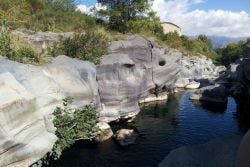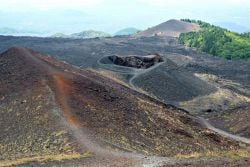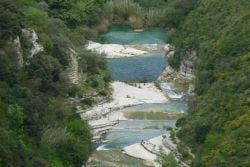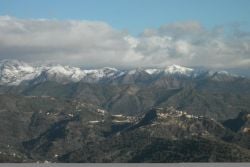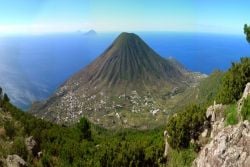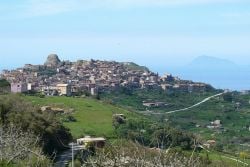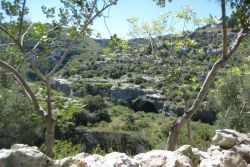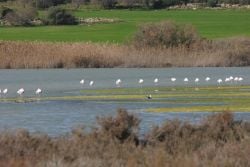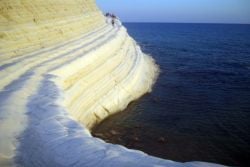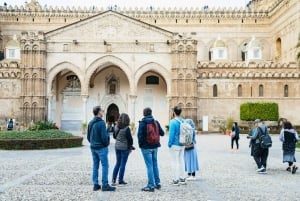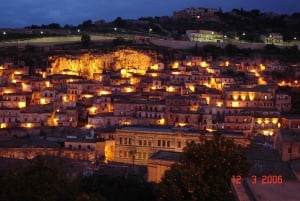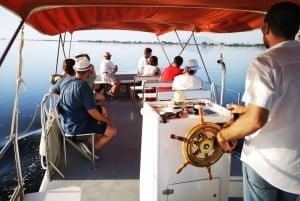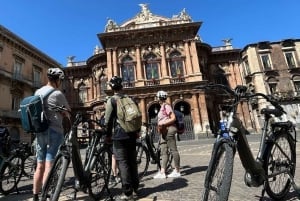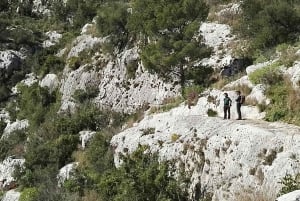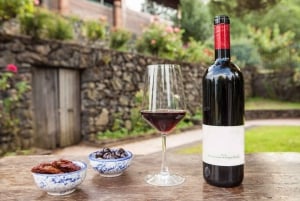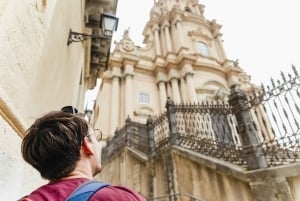Natural Beauties
Sicily is dotted with Natural Parks and Nature Reserves, big ones like the Parco dell’Etna and small ones, such as the Grotta di Carburangeli in Carini. Sicily’s nature reserves and parks cover mountainous and volcanic areas, caves, canyons, grottoes, gorges, rivers, lakes and marine areas, and islets like Filicudi.
Nature fans will love the variety of the Sicilian flora and fauna, both mediterranean and subtropical. There are more than 200 endemic species of plants to be discovered, 150 of them are to be found in the Parco Naturale Regionale delle Madonie - not to speak of the other 2,500 plants that are at home in Sicily, amongst them 800 hundred year old oak trees, wild orchids, holm oaks, birches and beeches, manna-ash trees, wild cyclamen, groundsel, wild asparagus, the Nebrodi-abete, thyme, rosemary and wild fennel, and 300 year old giant holly trees.
There is also a vivid wildlife to be explored: in the air warblers, cuckoos, jays, rock pigeons, herons, buzzards, sparrow-hawks, kestrels, peregrine falcons, golden eagles, kingfishers, and nocturnal birds like barn owls, tawny owls, scops owls and long-eared owls. With a little luck you will even see a sea eagle in the Parco dello Zingaro. On the ground and in the water there are mammals, reptiles, amphibians, invertebrates and turtles, lizards and green lizards, martens, porcupines, wildcats, weasels, hedgehogs, dormice, rabbits and foxes, sea foxes, snakes, and several species of bats and mice . Insects like crickets, bees, locusts, grasshoppers and butterflies are playing their essential role in the ecological balance. Best for birdwatching is Vendicari with its hundreds of migratory birds, flamingos and cranes.
Many of the reserves feature also archaeological sites, charming Medieval villages and towns, castles, monasteries, interesting geological formations, great beaches and picturesque coastlines. Plus numerous vineyards and olive plantations which invite you to enjoy some wine and olive oil tastings.
In Madonie mountains your offspring will find a children’s paradise at the “Parco Avventura delle Madonie” – a big adventure park.
Mount Etna presents a bizarre volcanic world with giant craters, lava grottoes, caves and tunnels, which are best to be discovered by an off road excursion, or on a tour up to 2,900 m. The island of Vulcano entices with sulphur springs and natural mud baths, and a hike on Stromboli or a boat excursion to its “fire slide” is an unforgettable experience.
Well, we cannot list all 77 nature parks and reserves of Sicily, but we are presenting the most interesting ones at Sights & Attractions.
Our following “Natural Beauties for Sicily Beginners list" contains spots that are interesting for the whole family:
Mount Etna
Lunar landscapes, craters, lava grottoes and tunnels, and rare plants – a great experience for children. Extended vineyards at the slopes of Mount Etna – a great experience for adults (wine tastings...) In winter skiing
Parco Naturale Regionale delle Madonie
A journey among tradition, nature, castles and art – something for everybody. The Madonie mountains are home to some of the best wines of Sicily, and numerous restaurants offer savoury local cuisine based on meat. Adventure Park for children and in winter skiing
Riserva Naturale Orientata di Vendicari
Migrating ground for flamingos and other birds, great sandy beach, gay-friendly beach – a visit is recommended for bird watchers and beach aficionados – only reachable by car. Flat region, perfect for easy hikes
Parco Fluviale dell’Alcantara
Sicily’s gorgeous river park – spectacular basalt gorges, dramatic 25 m high cliffs, great hiking area, charming Medieval villages, castles, cloisters and monasteries, orchards and olive groves
Parco Naturale dei Nebrodi
Sicily around and nature within – large woodland areas, varied flora and fauna, a falconry, semi-wild horses and the famous black Nebrodi-pigs –good for biking and hiking. See more here
Riserva Naturale Orientata Cavagrande del Cassibile
Hiking and walking, enjoying lush green and a bath in natural swimming pools not far from Syracuse. The canyon of Cavagrande del Cassibile is, second to us, one of the most beautiful green places in the whole of Sicily.
Riserva Naturale Orientata Montagne delle Felci e dei Porri – Salina
The area around Salina’s perfectly cone-shaped twin volcanoes is nature lover’s paradise, with its chestnut and pine forests, and – in spring – flower carpets covering the slopes of Monte delle Felci and Monte dei Porri. Wonderful cool refuge from the summer heat
Pantàlica – UNESCO World Heritage Site
Pantàlica = about 5000 cave tombs, cave churches and rock-cut burial chambers – some of them dating back to the 13th century BC, steep gorges, crystal clear rivers, giant fennel, plane-trees, wild thyme and sage, falcons and porcupines.
Bosco di Ficuzza – The Forest of Ficuzza
Very few visitors come to the woods of Ficuzza, which are ideal for cycling, horse riding, hiking and botanizing. The highest peak, Rocca di Bussambra, offers breathtaking vistas. Bosco di Ficuzza features great walking trails, mountain climbing, in the village of Ficuzza a castle and some bars, and in winter waterfalls at the “Gola del Drago” (Dragon’s Throat) near Corleone.
Riserva Naturale Orientata dello Zingaro
This park and its surroundings belong to the most beautiful parts of the west of the island. It is located between San Vito Lo Capo with a Caribbean-like beach and the charming little village of Scopello, featuring sea stacks, grottoes and myriad of coves, small pebbly beaches nestled in rocky bays, a clear turquoise sea, and a varied flora and fauna. The park is attractive for both hikers and bathers. In spring it is dotted with hundreds of colourful wild flowers, including wild orchids, anemones, and crocuses. Good for: bird watching and botanizing
Scala dei Turchi – The Turkish Stairs
Next to Agrigento, at the seaside, you can admire a natural wonder – a snow white rock, whichs huge steps reach up to 50 metres. The bright chalk rock makes a great contrast to the deep blue sea. According to legend (or history, who knows), the so-called Turkish Stairs were the “invading gateway” of the conquerors.


